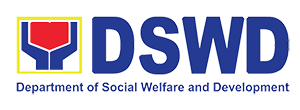MANILA – The Kapit-Bisig Laban sa Kahirapan-Comprehensive and Integrated Delivery of Social Services (Kalahi-CIDSS) is one of the programs featured in the World Bank publication entitled “I’d Like You to Know” which shows the different stories of people from across the East Asia and Pacific region whose lives changed because of development projects.
The publication highlighted how the residents of the town of Balangiga, Eastern Samar took advantage of the lessons they learned in implementing Kalahi-CIDSS to follow a community-driven development (CDD) strategy. Balangiga has been implementing the program since 2003.
Community empowerment important in post-disaster recovery
Balangiga’s experience with implementing Kalahi-CIDSS helped them recover in the aftermath of Typhoon Yolanda, said to be one of the strongest typhoons to make landfall in the world. Mayor De Lira was quoted, “The CDD setup made it easier to get reliable information on the ground that was important for making decisions… Here in Balangiga, our experience is different because the people are empowered. The community is empowered. People here are involved – something we learned in Kalahi-CIDSS”.
Balangiga was along the direct path of Typhoon Yolanda when it hit the country on November 8, 2013. Even so, it was also one of the quickest to begin post-disaster relief and recovery operations.
The value of CDD in helping citizens in disaster risk reduction and management has now been recognized because of the experiences of towns such as Balangiga. Upon the scale-up of Kalahi-CIDSS into a national CDD program, it was redesigned to support post-disaster recovery and rehabilitation, a move brought about by the impact of Typhoon Yolanda. Of its target coverage of 847 municipalities, 554 are Yolanda-affected, one of which is the town of Balangiga.
Beyond the numbers
“I’d Like You to Know” recognized CDD as an important development strategy, which discussed how the strategy was used in the Philippines, Vietnam, Myanmar, and Indonesia.
However, Kalahi-CIDSS is the only program in this country showcased in the publication. Other programs that were featured included the Solomon Islands Rural Development Program, the electrification programs of Mongolia and Lao PDR, the Health Equity Fund of Cambodia, and the Papua New Guinea Business Coalition for Women.
In his message in the book, Axel von Trotsenberg, the Vice President of the East Asia and Pacific Region of the World Bank, said that the publication showed the stories behind the numbers and statistics on people affected by poverty.
He said, “At the end of the day, the work we do in development is not about numbers; it’s about supporting people to change their own lives for the better, to build a future for their children, and with a little help, to pull themselves out of poverty”.
He continued, “I hope you remember the people you will meet in the pages of this book. They put a human face on development statistics”.
The World Bank has been a partner of Kalahi-CIDSS since the program was piloted in 2002. ###


